
| (one synonym : Chaerocampa potentia Druce, 1894) MACROGLOSSINAE, SPHINGIDAE, BOMBYCOIDEA | (donherbisonevans@yahoo.com) and Stella Crossley |
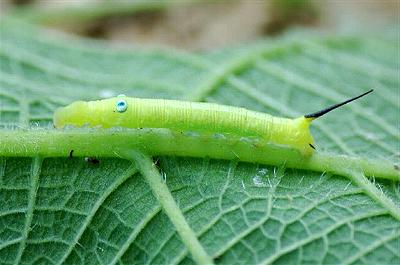
early instar
(Photo: courtesy of Tom and David Sleep, Brisbane, Queensland)

| (one synonym : Chaerocampa potentia Druce, 1894) MACROGLOSSINAE, SPHINGIDAE, BOMBYCOIDEA | (donherbisonevans@yahoo.com) and Stella Crossley |

early instar
(Photo: courtesy of Tom and David Sleep, Brisbane, Queensland)
The early instars of these Caterpillars are green with a dark straight tail horn, and a pair of blue eye markings on the first abdominal segment. The early instars stay on the the undersides of the leaves, and eat holes in the leaves while avoiding eating the veins.
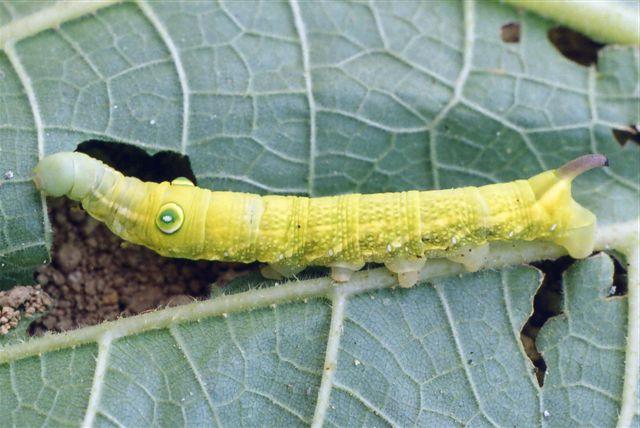
Later instars have two colour forms: green and brown. The green form has a yellow line along each side of the back, above a series of diagonal stripes along the sides of the abdomen. The brown form is speckled, and has alternating bands of pale and darker brown bands. Both colour forms have a pair of green and white eyespots, one each side of the first abdominal segment, and have a strong reddish backward curving horn on the last segment.
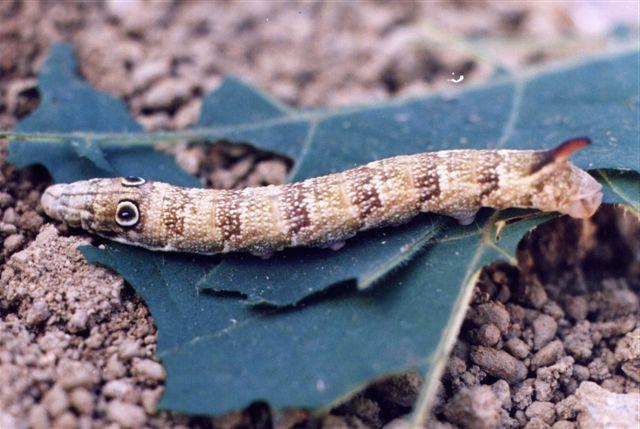
The caterpillars have been found feeding on plants in URTICACEAE including
The caterpillars grow to length of about 7 cms.
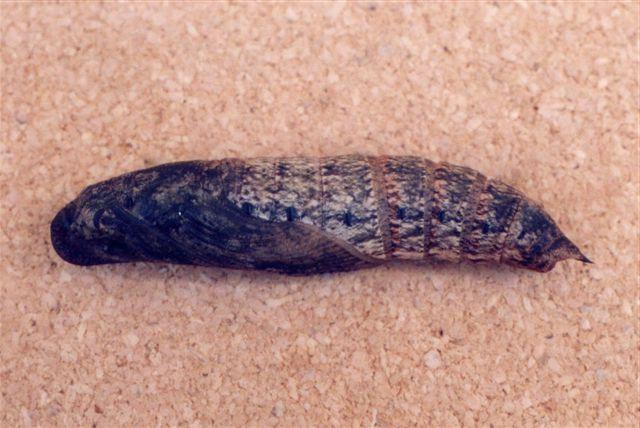
The caterpillars pupate on the ground in a strong cocoon covered in debris. The pupa is slender and mottled brown, with a sharply pointed tip to the abdomen. The pupa has a length of about 5.5 cms.
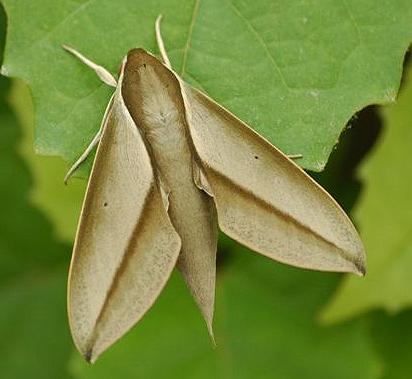
The adult moths of this species have pale brown forewings with a dark dot near the middle of the costa. They also have a dark stripe from base to wingtip, which shades paler on the side nearer the costa.
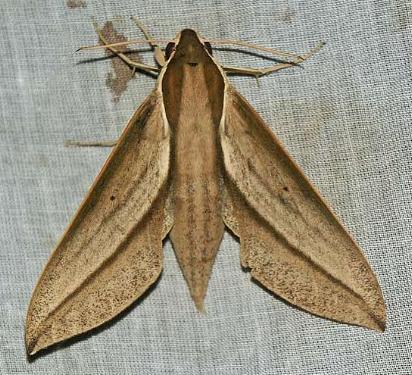
Specimens from the far north often have an extra dark stripe on the each forewing. The moths have darker brown hindwings, each with a pale hind margin, and a pale patch by the tornus. The moths have a wingspan from 8-10 cms.
The eggs are yellow slightly squashed spheres. They are laid on the undersides of foodplant leaves.

The species occurs in
Many Australian specimens previously thought to be Theretra radiosa have been shown actually to be Theretra queenslandi.
Further reading :
Thomas P. Lucas,
Butterflies and Moths,
Descriptions of two new Butterflies and nine new Sphingidae
or Hawk moths found in Queensland,
The Queenslander (Newspaper),
Saturday 9 May 1891, p. 894.
Maxwell S. Moulds, James P. Tuttle and David A. Lane.
Hawkmoths of Australia,
Monographs on Australian Lepidoptera Series, Volume 13 (2020),
pp. 260-263, Plates 68, 81, 92.
 caterpillar |  butterflies |  Lepidoptera |  moths |  caterpillar |
(updated 7 April 2006, 3 June 2018, 8 May 2020)